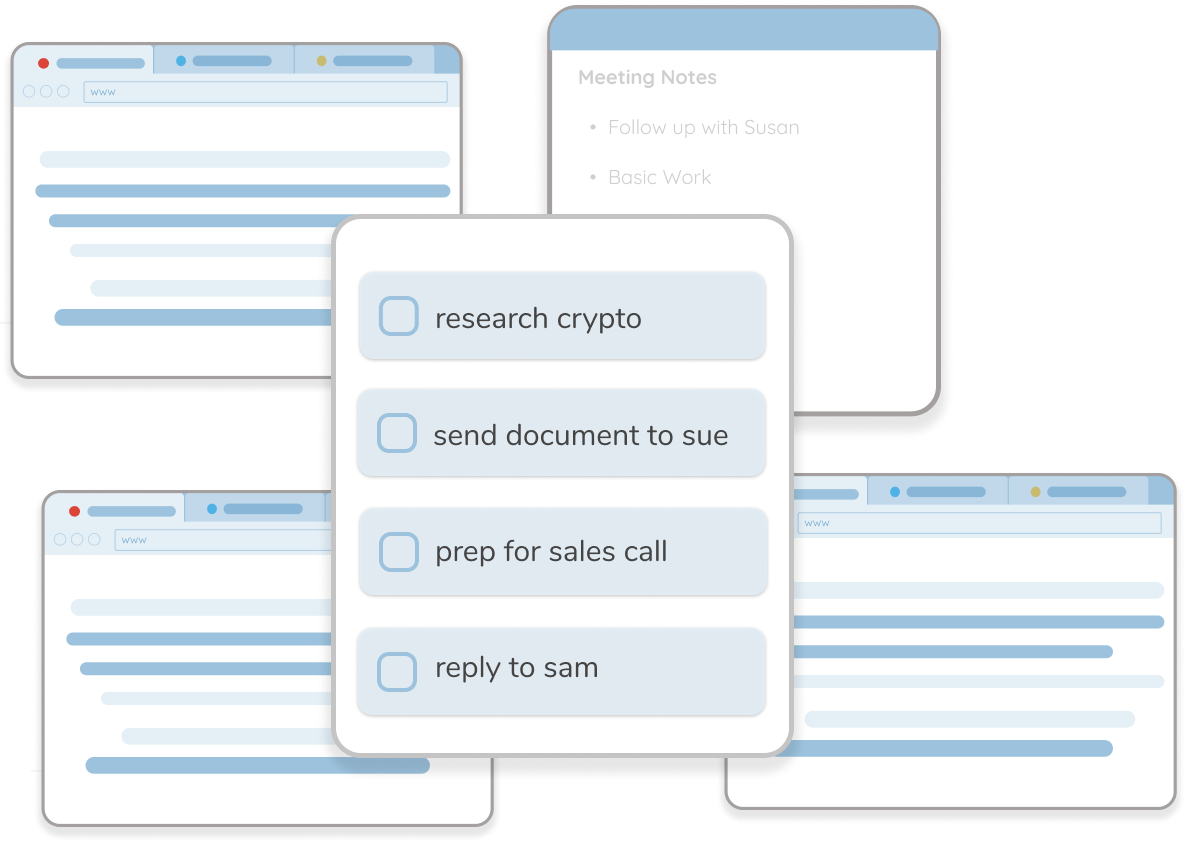
Amna is my first startup, that I quit my full-time job to work on. You’ll also seem me writing about my experience as a founder, and managing a team of interns, and startup-building.
Context Switch
Context switching is the 21st century problem to solve.
A new email, a co-worker pinging you on Slack, a text from a local restaurant on a sale they’re having, these are the everyday context switches we do. These switches, can also be classified into two types:
-
Intentional: I am explicity taking the decision to change what’s on my mind
-
Unintentional: I got interrupted and I’m working on something new. Also called disruptions.
Deep work, as defined by Cal-New port, is defined as a state of long uninterrupted work.
However, in today’s world, you have to setup time blocks, pomodoros, and silence hours to work peacefully. And funny enough, even without external distractions, we distract ourselves. Almost 47% of our working time is spent wandering.
I don’t get to control when I get inspired, okay.
It’s like this book, If you give a mouse a cookie. I’m typing away at an essay, and I realize I’m hungry, and I do quick search for local food, and without knowing it, I’m looking at the top 5 restaurants in London.
However, one hypothesis is that if we were more aware and explicit with our intentions, we could be more fluid with our context switches.
Meet Amna
Amna (for now) is an app that sits on your desktop. It manages your browsing sessions, notes and checklists by context.
Why browsing?
Most people get a lot of work done in the browser. It's a good place to start because the browser spans multiple contexts. Design. Research. Writing.
Instead of calling them contexts, Amna uses tasks to represents contexts. A to-do list interface.
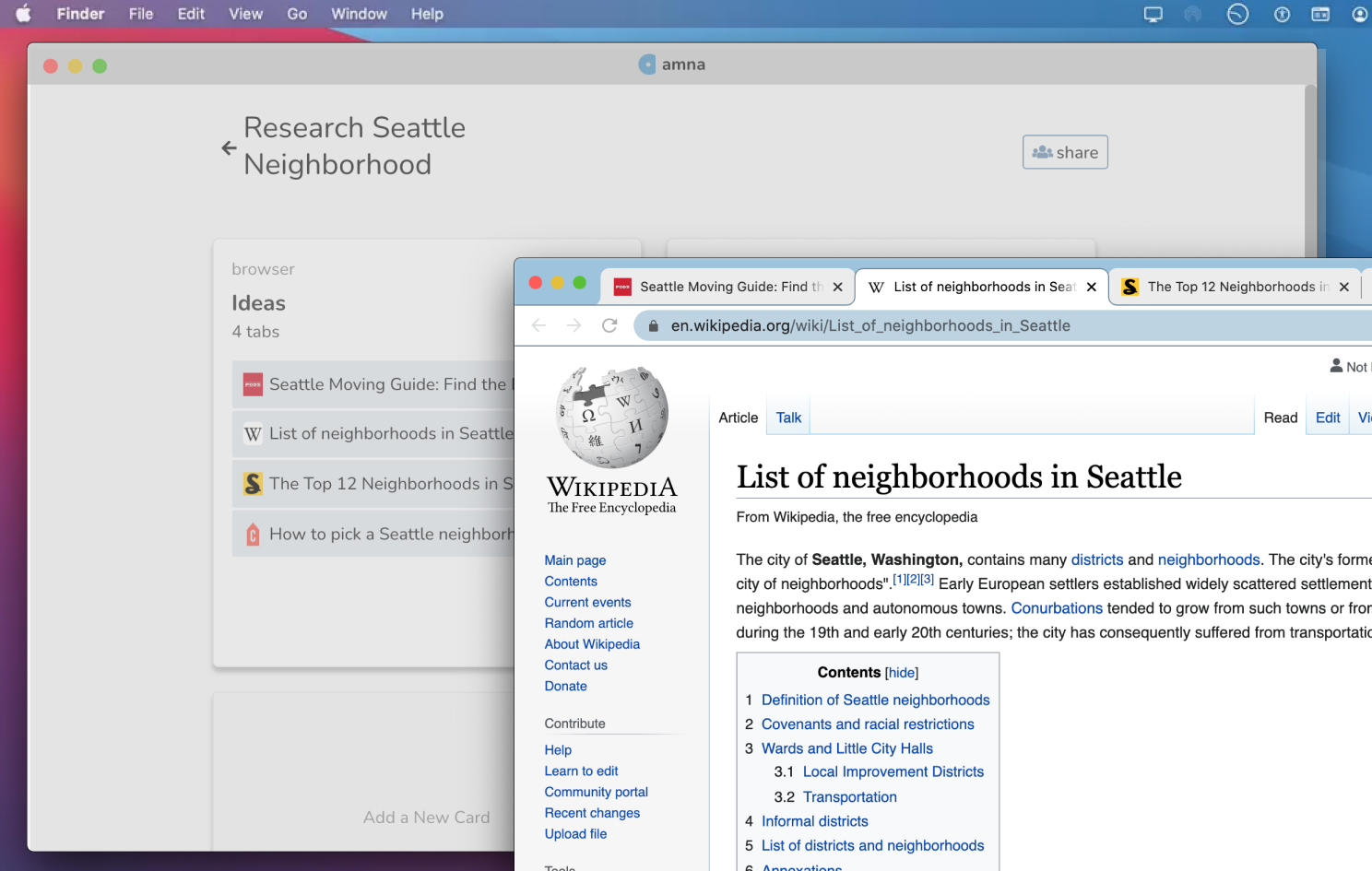
Tasks in Amna are areas to capture infromation
When you click on a task in Amna, it provides everything you need for the task to get completed. That means no jumping around.
Why a To-Do List?
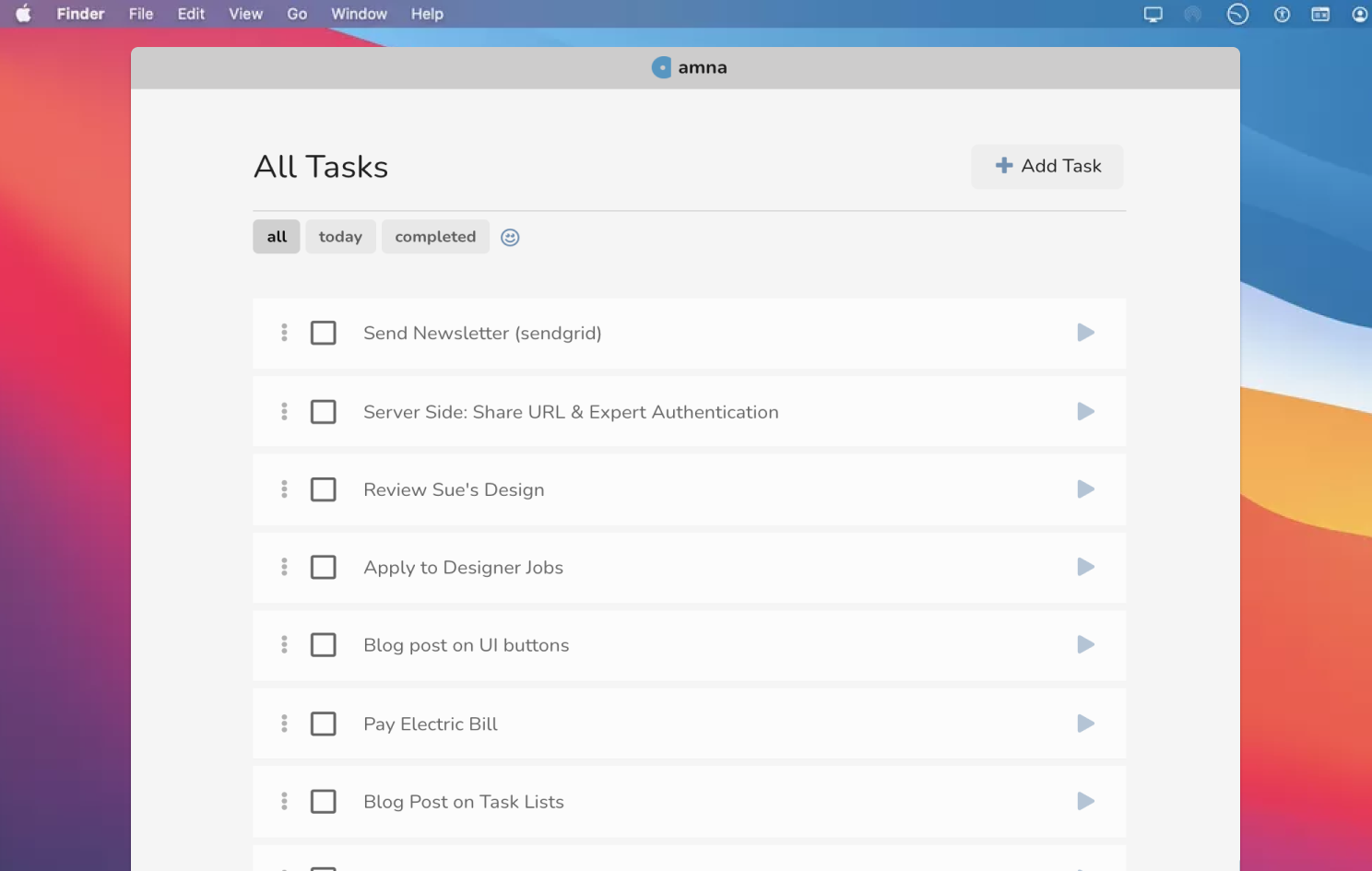
Each task stores the supporting information for a task
Tasks in a way are opinionated. When written well, they have outcomes and objectives. People are incentivized to get rid of tasks. They want to naturally complete them. That means your workspace naturally cleans itself.
Tasks are inherently tied with time. The top of mind ones filter to the top.
It's not easy
Most people don't think of tasks as a way to organize
There are also a few more deeper constructs of headspaces, collections, and a calendar views for further organization.
Context first
Amna automatically saves your tabs as part of a context. All you have to do is open your to-do list, and start working.
This is unique because most folder and space services require you to paste in links, or copy text over. Amna is a place to do actually do the work, and have it save automatically, rather than post-organizing things.
As you work, Amna, also minimizes itself to give you a tiny reminder of the task at hand, and a focus bar.
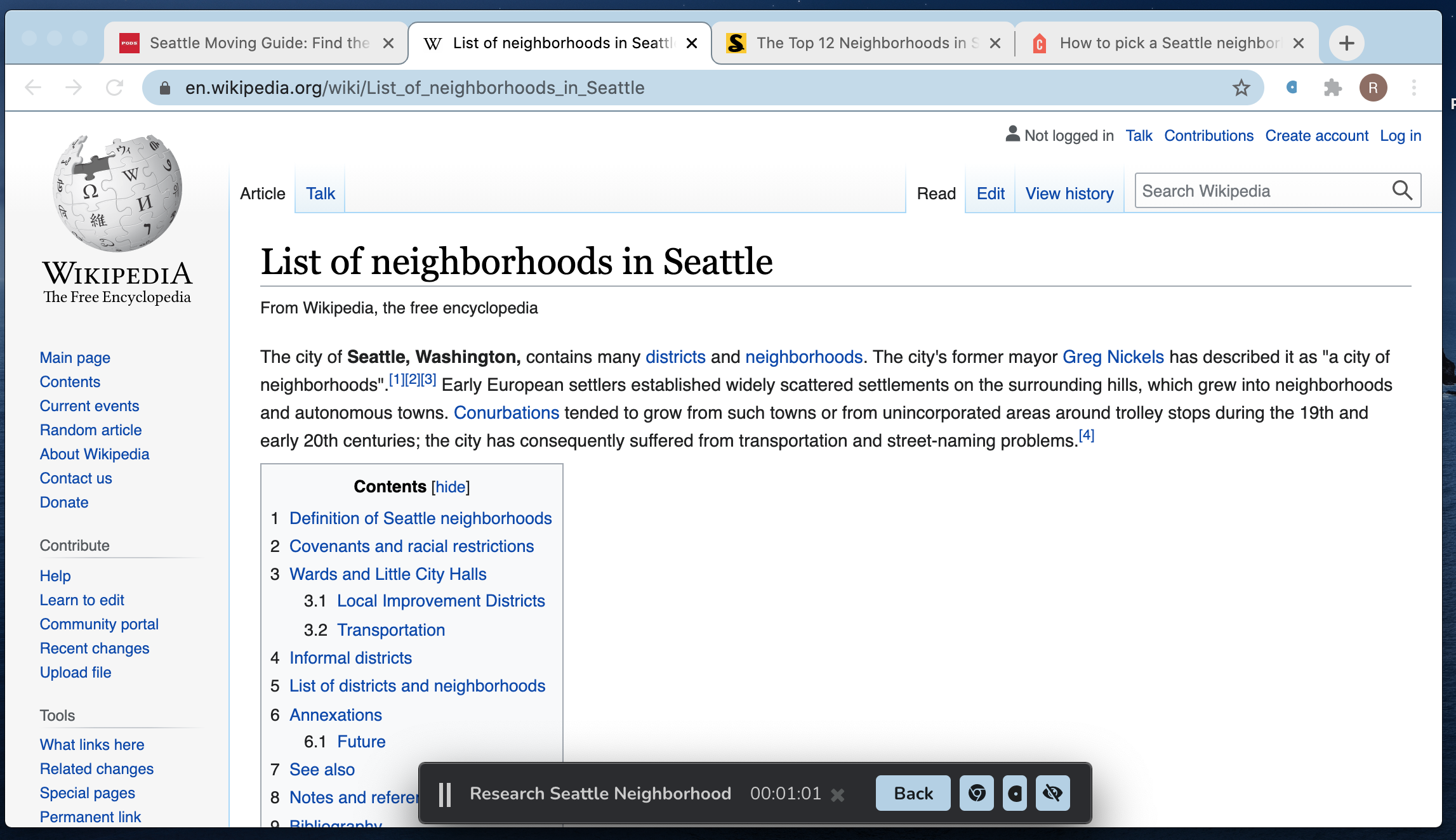
focus bar pinned to the bottom
If you get distracted, you know exactly what your focus is. You can also pair your calendar events into Amna, and keep all the containing information in one space.
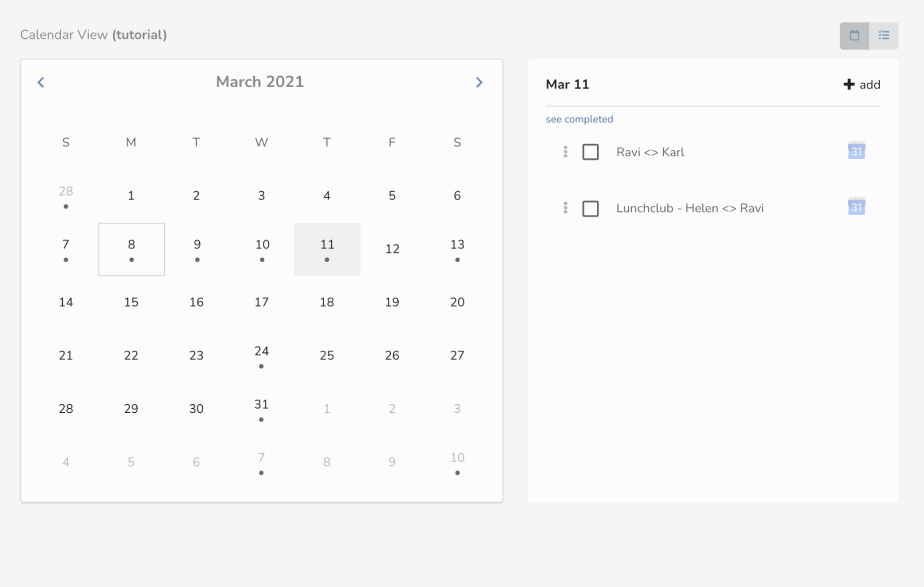
A daily view of things that need to get done
